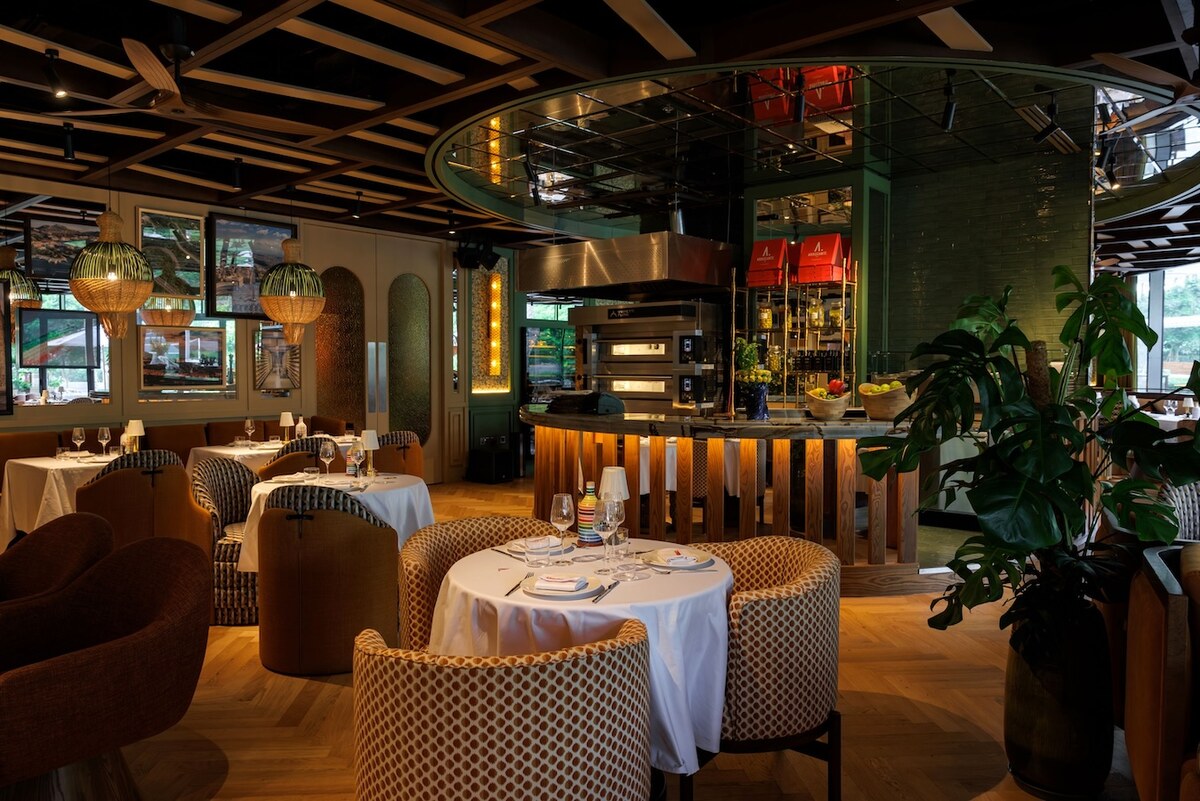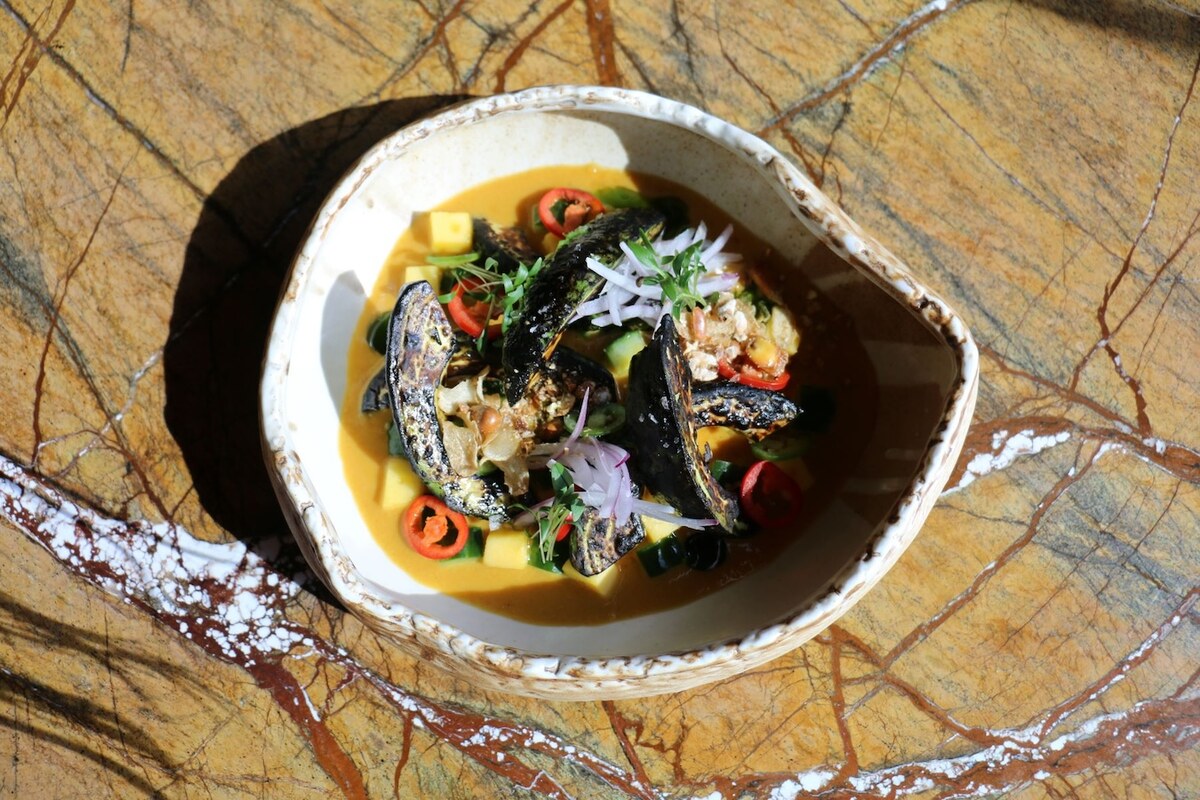RIYADH: Inside his apartment in Riyadh, British artist Simon Mortimer experiments with images that explore Saudi Arabia’s current period of transformation. His vibrant creations are filled with references to contemporary Saudi culture through high and low art, with an abundance of Arabic influences.
In one of the artist’s recent works, a realistic painting of a typewriter on light blue, gray and yellow background is encircled by various signs and symbols from everyday Saudi culture, including an evocative Saudi-based multinational Sharbatly fruit label showing a young boy wearing a red hat. At the top of the work is what appears to be a phrase from another advertisement in Arabic, translating to “For those who don’t know.” On the left-hand side of the typewriter, which Mortimer explains represents the idea of communication, is a cartoon-like depiction of a red falcon with its beak nestled ever so slightly on the machine and a small yellow crown over its head.

Simon Mortimer. (Supplied)
Mortimer, currently working in Riyadh as an art teacher, is showing works in a new exhibition at the Media Majlis Museum (mm: museum) at Qatar’s Northwestern University titled “The limits of my language are the limits of my world.” It’s a mixed-media exhibition exploring the Arabic language, its historical and contemporary context and questions surrounding its future existence. It runs until Dec. 5.
Many of Mortimer’s recent works incorporate Arabic writing and the imagery he selects is often repeated throughout his works (the falcon, the Sharbatly logo, coffee pots, and more). He doesn’t speak Arabic, but he says he is “fascinated by the forms of the letters, the culture and the language” and likes to use words with meanings that reflect the subject matter of his pieces.
“I love to explore the popular culture of a place,” he tells Arab News. “You immediately see these interesting images, logos and adverts. I love the visuals and the aesthetics, and I often don’t understand what they mean, especially when the labels are in Arabic, so I go onto Google Translate to get a better sense of the meaning.”

'Learn' by Simon Mortimer. (Supplied)
Mortimer moved to Riyadh around a year ago from Doha, where he lived for five years. In the Qatari capital he was an artist-in-residence at the Fire Station, one of Qatar’s leading contemporary art spaces. He has lived in a number of other countries, including the Philippines, Greece and Spain, and has exhibited his work in the UK, Greece, Indonesia, the Philippines and Qatar.
“I love being a foreigner,” he says. “I love living in different countries and exploring local popular culture. It is interesting whatever country I am in,” explains Mortimer. “Everyday images are combined with text, and the ambiguity that this can lead to reflects the misunderstandings that sometimes arise when living in, or learning about, other countries and cultures.

'No Limits' triptych by Simon Mortimer. (Supplied)
“I enjoy layering and creating texture with a wide range of media, as well as challenging the concept of ‘high’ and ‘low’ art; traditional ways of mark-making such as oil paint and etching are brought together in the same artwork with modern media such as spray paint and marker pen,” he continues.
Mortimer’s creative process involves literal and metaphorical layers. He incorporates images and references from Saudi pop-culture, as well as Arabic script, and then merges them in a mixture of traditional oil painting, acrylic, stencils, photocopies, and spray paint. In essence, Mortimer’s works offer the reflections of a non-Arab on present-day Saudi society, as well as his desire to better understand Saudi contemporary culture.

'Right to Left' by Simon Mortimer. (Supplied)
The new exhibition in Doha invites visitors to explore and celebrate Arabic’s rich history and influence of the Arabic language and to reflect on its place in the future. It revolves around four key themes: “Always another side?” which introduces Arabic and its complexities, challenging negative connotations of the language through beautiful representations; “An influential and powerful language?” exploring how Arabic has shaped politics, science, religion and culture worldwide; “Does media representation matter?” examining the portrayal of Arabic in the media; and the final theme: “Is Arabic a language of the future?” exploring efforts to preserve and protect the language in a world where the ubiquity and dominance of English — particularly in the digital realm, poses challenges.
Mortimer’s works in the show explore these themes from the viewpoint of a non-Arabic speaker. They incorporate images from contemporary Arabian society — particularly drawing from his recent experiences in Saudi and Qatar — and Arabic proverbs to explore language, multiculturalism, and education from the perspective of a non-speaker.

'Round Puff' by Simon Mortimer. (Supplied)
Incorporating local imagery and language into his work allows Mortimer to immerse himself more fully in local culture — and learn something of the language. He says he also learns from, and is inspired by, the Saudi high school students he is teaching.
“They tell me about the cartoons and the sports they watch and introduce me to popular culture in Saudi and discuss the changes taking place in the Kingdom,” he says. “I’ve learned so much through them.”






























